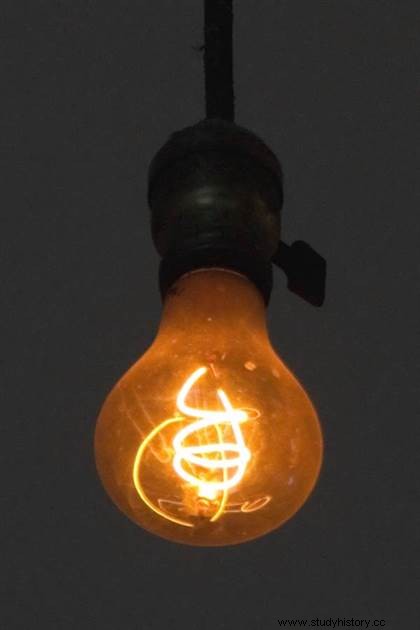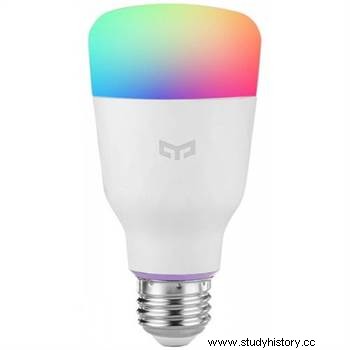 The Invention of the Light Bulb is generally attributed to Thomas Edison , who designs and then markets, on October 21, 1879 , a bulb whose filament is carbonized cotton fiber. But it's actually a certain Joseph Swan , whose anteriority is recognized following a lawsuit, which was at the origin of the electric bulb . The two men were also authorized to manufacture their bulbs, which over the decades underwent transformations and improvements that still monopolize the energy of many research laboratories today.
The Invention of the Light Bulb is generally attributed to Thomas Edison , who designs and then markets, on October 21, 1879 , a bulb whose filament is carbonized cotton fiber. But it's actually a certain Joseph Swan , whose anteriority is recognized following a lawsuit, which was at the origin of the electric bulb . The two men were also authorized to manufacture their bulbs, which over the decades underwent transformations and improvements that still monopolize the energy of many research laboratories today.
Who invented the light bulb?
The light bulb was invented in 1879 by the English Joseph Swan before being improved by the work of the American Thomas Edison , the first using a bayonet base, the second a screw base. Edison files a patent for a light bulb powered by... a bamboo filament from Japan. The very first electric light bulb consists in carrying incandescent a filament of tungsten placed in a vacuum or in a rare gas (in this case, krypton or argon). However, this technique has some drawbacks:once overheated, the material of the filament degrades, condenses on the bulb, making it more opaque over time. The filament ends up breaking after a few hundred hours of operation.
 Electric bulb:halogen (1959) then low consumption (1983)
Electric bulb:halogen (1959) then low consumption (1983)
The halogen bulb was developed by two engineers from General Electric:Edward Zubler and Frederick Mosby . Its operation is quite similar to that of the filament bulb, except that it is placed in a mixture comprising a halogen gas. This technique allows the filament to withstand a much higher temperature and considerably extend its longevity, but also to reduce electricity consumption. The energy-saving light bulb is actually a domestic version of the famous industrial tube:the fluorescent lamp. Its lifespan is almost ten times longer than an incandescent lamp, for a consumption approximately five times lower.
It was launched in 1983 by the company Philips , but it had only limited success, due to its very high price and relatively bulky size. But the production costs are nowadays lower, and above all, this type of bulb is intended to replace, from 2012, the so-called "classic" bulbs.
Invention of the LED lamp (2014)
The LED lamp (LED) is the latest innovation in lighting. Although the principle was demonstrated at the beginning of the 19th century, it was not until 2014 that three Japanese researchers developed an LED capable of providing high light output. They will receive the Nobel Prize in Physics for this innovation.
 Its main interest lies in its performance:low power consumption for greater luminous efficiency. With a limited environmental impact, it also allows the production of a wide variety of colors. Now connected, the LED bulb is a trendy object that has integrated home automation .
Its main interest lies in its performance:low power consumption for greater luminous efficiency. With a limited environmental impact, it also allows the production of a wide variety of colors. Now connected, the LED bulb is a trendy object that has integrated home automation .
To go further on the invention of the light bulb
- The fabulous history of inventions - From mastery of fire to immortality. Dunod, 2018.
- History of Electricity:From Amber to Electron, by Gérard Borvon. Vuibert, 2009.
